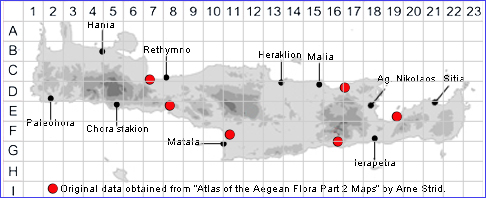
SPECIES DESCRIPTION
EUPHORBIA CHAMAESYCE
Family and Genus:- See- EUPHORBIACEAE/ Subgen. CHAMAESYCE
Common Names:- Small spurge
Homotypic Synonyms:- Anisophyllum chamaesyce, Chamaesyce chamaesyce
Tithymalus chamaesyce
Meaning:- Euphorbia (L) For Euphorbus, physician to the King of Mauritania.
Chamaesyce (Gr) Dwarf fig tree.
General description:- Procumbent annual, Hairy with short thin hairs, rarely
hairless.
Stems:-
1) Numerous, procumbent, thin and branching, with branches up to 30 cm.
Leaves:-
1) (1-)3-7(-11) x (1-)2·5-4·5(-6) mm, asymmetrically ovate-suborbicular to oblong,
obtuse or emarginate, oblique at the base, nearly entire or obscurely serrulate.
2) Petiole, c. 1 mm.
3) Stipules, up to 1 mm, triangular.
Flowers:-
1) Cups, 1-2mm, isolated in the axils of the branches.
2) Glands, red, surrounded by a white membrane, three or five-lobed, giving the
impression of a real lobed corolla.
Fruit:-
1) Capsule, 2 x 2 mm, rather deeply sulcate, smooth, glabrous to densely patent-
pubescent.
2) Seeds, 1·2 mm, ovoid-quadrangular, irregularly tuberculate-rugulose, greyish.
Key features:-
1) Hairs on capsule patent.
2) Leaves, (1-)3-7(-11) mm, entire or obscurely serrulate.
Habitat:- Gravelly road verges and somewhat damp, compacted ruderal ground. 0-
1100 m.
Distribution:- Scattered throughout Greece. Widespread throughout the
Mediterranean region. Very rare on Crete known only from a few scattered coastal
areas.
Flowering time:- Apr-July.
Photos by:- Fotis Samaritakis and Charalambos Chiotelis
